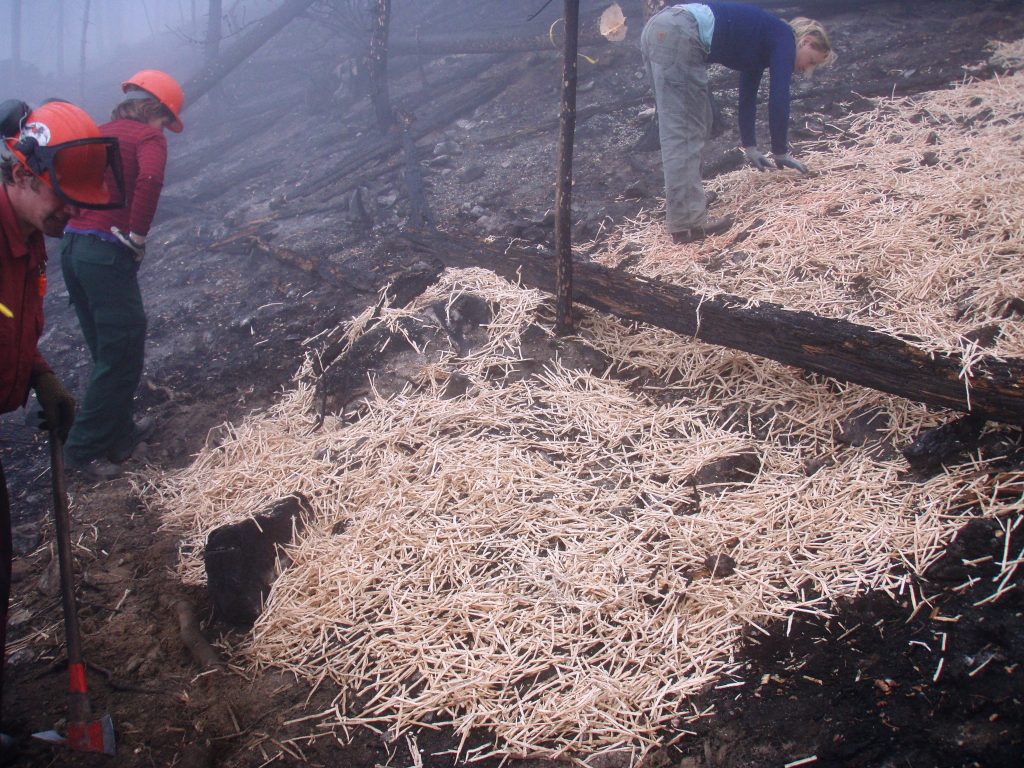Abstract
Soil erosion is a significant risk on burned areas following wildfires due to loss of vegetation, fine surface debris, and fireline construction. Erosion may be triggered by wind, resulting in loss of topsoil and ash with resulting air quality effects, or by rainfall that displaces seeds, creates rills, and washes topsoil downslope.
A range of materials are commercially available to reduce the erosive effects of wind and/or rainfall, including agricultural straw, hydraulic mulches, shredded woody debris (slash), and rolled erosion blankets. Each of the conventional materials have limitations and operational issues that led federal agencies to support development of a new all wood strand material beginning in 2002. They sought a new wood-based erosion control material that would be longlasting, wind resistant, naturally weed free, and could be transported and applied using conventional hay and straw methods. Three years of joint research and development between the USFS Rocky Mountain Research Station and Forest Concepts resulted in a wood-strand material that is optimized for technical performance, baling for storage and transport, and ease of application.
The wood-strand material is now sold under trade names WoodStraw® and Blue Straw™. More than 15,000 tons of the wood-strand material has been used on a range of road, post-wildfire, mine reclamation sites, watershed protection, streambank, ski area, recreation trail, utility corridor, and other uses across federal, state, and private lands in the western United States.
About the Publication
Dooley, J. H. and M.C. Perry (2015). Auburn, WA, Forest Concepts, LLC.
Read the full article in PDF format:

